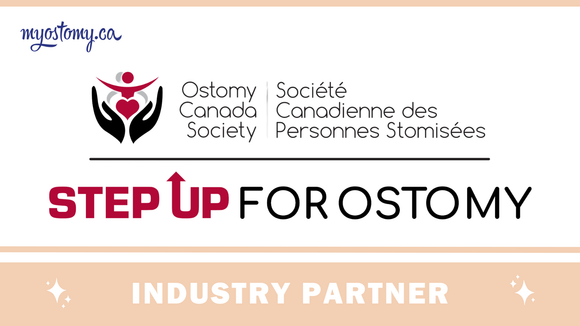
Parastomal Hernia Tips and Tricks
My Ostomy
Why June Matters: Hernia Awareness Month
June is Hernia Awareness Month, making it the perfect time to learn about prevention strategies and support options. It’s also a time to break the stigma and normalize open conversations about hernia prevention and ostomy care.
Whether you're newly post-op or years into your ostomy journey, it's never too late to take proactive steps toward prevention. Read our previous blog post on Hernia Awareness Month for more insight into this topic.
What Is a Parastomal Hernia?

A parastomal hernia occurs when part of the intestine pushes through the abdominal wall near the stoma, creating a bulge or swelling. It's one of the most common complications after ostomy surgery—especially for people with colostomies.
Parastomal hernias can develop gradually over time or appear suddenly. They can cause discomfort, affect the fit of your pouching system, and lead to complications if left unmanaged. Here are a few tips and tricks to reduce your risk of parastomal hernias.
Tips for Preventing a Parastomal Hernia
While not all parastomal hernias can be prevented, there are several steps ostomates can take to reduce their risk:
1. Support Your Core with a Hernia Belt
Wearing a high-quality hernia support belt can provide gentle compression around your stoma and help prevent your core strength from weakening. Corsinel hernia belts are designed specifically for ostomates and offer discreet, breathable support without restricting movement.
These belts are particularly useful during physical activity, heavy lifting, or post-surgery recovery. They come in different support levels, so you can choose the right fit for your lifestyle.
2. Avoid Heavy Lifting (or Lift Smart!)

Straining or lifting heavy objects can increase abdominal pressure, which puts stress on the stoma site. Try to avoid lifting anything heavier than 10–15 lbs, especially during the first few months after surgery.
If lifting is unavoidable, use proper techniques—lift with your knees and keep your back straight to reduce pressure on your abdomen.
3. Strengthen Your Core, slowly but surely

Gentle core exercises can help strengthen your core muscles and reduce the likelihood of a hernia. Focus on low-impact activities like walking, light yoga, or low-intensity core exercises. Remember to consult a medical professional if you are unsure if an exercise is safe to perform.
4. Watch for Weight Fluctuations

Rapid weight gain or loss can affect how your stoma and surrounding muscles function. Maintaining a healthy weight helps minimize stress on the abdominal wall and supports long-term stoma health.
5. The Ostomy Appliance That’s Right for You

An appliance that doesn’t fit properly can increase tension around your stoma, which in turn may contribute to hernia development. Make sure you’re using a secure-fitting pouching system that matches your stoma size and shape.
If you’re unsure, reach out to an NSWOC (Nurse Specialized in Wound, Ostomy, and Continence) to reassess your fit.
If you have questions about this program or need assistance selecting the right ostomy products, MyOstomy.ca is here to help! (Did we mention we are proudly Canadian owned and operated? 😉🍁)




